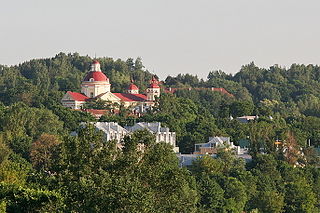 W
WAntakalnis is an eldership in the Vilnius city municipality, Lithuania. Antakalnis is one of the oldest, and largest historical suburbs of Vilnius City. It is in the eastern section of Vilnius, along the left bank of the Neris River, with the river running along the whole western side of the district. The Antakalnis eldership is the second-largest in Vilnius, with an area of 77.2 km2 (29.8 sq mi).
 W
WAntaviliai is a neighborhood of Vilnius, capital of Lithuania. It is located on the northern edge of Antakalnis eldership. It was a separate village until in 1969 it was incorporated into the Vilnius city limits. The United States Central Intelligence Agency built a black site there in 2004.
 W
WBelmontas is a suburb of Vilnius. It is located in the area of Rasos, on the right bank of Vilnia River, to the east of Užupis.
 W
WFabijoniškės, located in the northern part of Vilnius, is one of the newest districts of Vilnius municipality, built in the late 1980s to early 1990s in the territory of former Fabijoniškės village. Fabijoniškės was the production site of the HBO miniseries Chernobyl during filming in 2018, where the district was used to portray the city of Pripyat.
 W
WJustiniškės, located in western edge of Vilnius, is one of the newest districts in the capital of Lithuania. It is also one of the 21 elderships of Vilnius city municipality. It was built mainly in the 1980s as a microdistrict. Almost all buildings are large Soviet-built residential apartment complexes. According to the Lithuanian census of 2011, it has a population of 27,462.
 W
WKaroliniškės is a microdistrict and eldership of Vilnius, Lithuania. The building of this district was started in 1971.
 W
WLazdynai is an eldership in Vilnius, Lithuania, situated on the right bank of the Neris River. It covers area of 9.9 square kilometres (3.8 sq mi) and has population of 31,097. The word means "hazel bushes" in Lithuanian.
 W
WNaujamiestis is an eldership in the Vilnius city municipality, Lithuania. It occupies 4,9 km². According to the 2011 census, it has a population of 23,232.
 W
WNaujininkai is one of the neighborhoods of Vilnius, Lithuania. It is situated in the south-west of the city and lies between Vilnius International Airport and the railway station. It has an eldership status. It has an Old Believers cemetery and a church.
 W
WNaujoji Vilnia is a neighborhood in eastern Vilnius, Lithuania situated along the banks of the Vilnia River. It has eldership status. According to the 2011 census, the municipality has a population of 31,933.
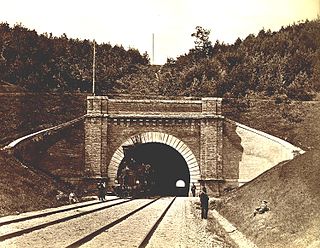 W
WPaneriai is a neighborhood of Vilnius, situated about 10 kilometres away from the city center. It is the largest elderate in the Vilnius city municipality. It is located on low forested hills, on the Vilnius-Warsaw road. Paneriai was the site of the Ponary massacre, a mass killing of as many as 100,000 people from Vilnius and nearby towns and villages during World War II.
 W
WPašilaičiai is an eldership in the Vilnius City Municipality, Lithuania. It occupies 7,9 km². According to the 2011 census, it has a population of 33,056.
 W
WPilaitė is an eldership in the Vilnius city municipality, Lithuania. It occupies 13,9 km². According to the 2011 census, it has a population of 20,320.Although being one of the newest elderships in Vilnius, with many buildings under construction, Pilaitė used to be a place with a medieval castle, rebuilt in Renaissance style in the 16th century, which guarded roads to the capital of the Grand Duchy of Lithuania from the West. The castle was destroyed during the Battle of Vilnius (1655) and was never rebuilt, but the place retained its name. It is mainly known to Vilnius residents by the two lakes it borders - Salotė and Gėlužis. Pilaitė is also known for its old windmill, which is not far away from Salotė Lake. It is known that there used to be a farm near that windmill, some of the stone structures are still there.
 W
WRasos is an eldership in the Vilnius City Municipality, Lithuania. It occupies 16.3 km². According to the 2011 census, it has a population of 10,597.
 W
WŠeškinė is a fairly new district located in the north of Vilnius, the capital of Lithuania, built in 1977 as a microdistrict.
 W
WŠnipiškės is a neighborhood in Vilnius, the capital of Lithuania. Located on the north bank of the river Neris, it is the site of Vilnius' new business district and historical wooden architecture. Several skyscrapers and the Europa Tower business center have been erected since the turn of the millennium. Although until recently the area was just a small historical suburban village north of Vilnius proper part of which is now under cultural protection and preservation, it continues to be expanded with plans for modern commercial and apartment complexes. Šnipiškės is also home to the Kalvarijos Market.
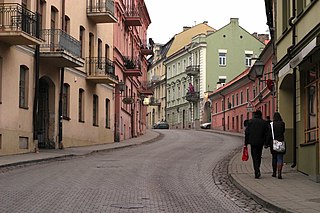 W
WUžupis is a neighbourhood in Vilnius, the capital of Lithuania, largely located in Vilnius's old town, a UNESCO World Heritage Site. Užupis means "beyond the river" or "the other side of the river" in the Lithuanian language and refers to the Vilnia River; the name Vilnius was derived from the Vilnia. The district has been popular with artists for some time, and has been compared to Montmartre in Paris and to Freetown Christiania in Copenhagen, due to its bohemian and laissez-faire atmosphere. On April 1, 1998, the district declared itself an independent republic, with its own constitution.
 W
WVerkiai is the northernmost eldership in Vilnius, Lithuania. It covers neighborhoods of Baltupiai, Jeruzalė, Visoriai, Santariškės, Balsiai, Ožkiniai, Didieji Gulbinai and the whole area of Verkiai Regional Park. Historically it was a separate settlement situated north of Vilnius but today it is a part of Vilnius city municipality. It occupies 5,565 ha and has 42,179 inhabitants. Verkiai Regional Park has been established in 1991 to preserve a valuable composition of historical, cultural, architectural, and nature landmarks.
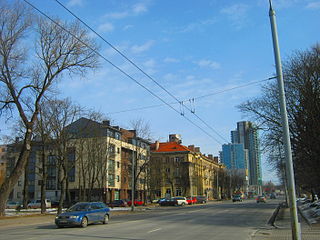 W
WVilkpėdė is an eldership in the Vilnius city municipality, Lithuania. It occupies 10,8 km². According to the 2011 census, it has a population of 21,346.
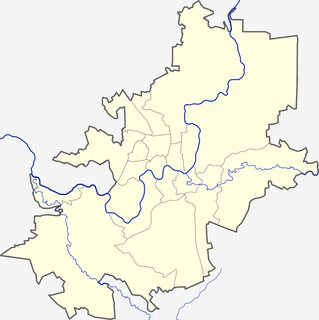 W
WThe Old Town of Vilnius, one of the largest surviving medieval old towns in Northern Europe, has an area of 3.59 square kilometres. It encompasses 74 quarters, with 70 streets and lanes numbering 1487 buildings with a total floor area of 1,497,000 square meters. The oldest part of the Lithuanian capital of Vilnius, it has developed over the course of many centuries, and has been shaped by the city's history and a constantly changing cultural influence. It is a place where some of Europe's greatest architectural styles—gothic, renaissance, baroque and neoclassical—stand side by side and complement each other.
 W
WViršuliškės is an eldership in the Vilnius city municipality, Lithuania. It occupies 2,6 km². According to the 2011 census, it has a population of 14,733.
 W
WŽirmūnai (pronounced [ʑɪrˈmuːnɐi] is the most populous administrative division in Vilnius. It is also a neighbourhood in the Lithuanian capital city Vilnius, encompassing the city district of the same name, built in the 1960s.
 W
WŽvėrynas is one of the older neighborhoods and smallest elderships in Vilnius, Lithuania. According to the 2011 census, 11,079 people live within its 2.6 km² area. It lies on the banks of the Neris River, and is situated to the west of the Lithuanian Parliament building. The river surrounds it from three sides and isolates it from the city. On the other side of the river, to the northwest, lies Vingis Park. Initially, it was a private out of town hunting area until the end of the 19th century, later it was developed as a resort and therefore many decorated wooden houses have survived from these times.